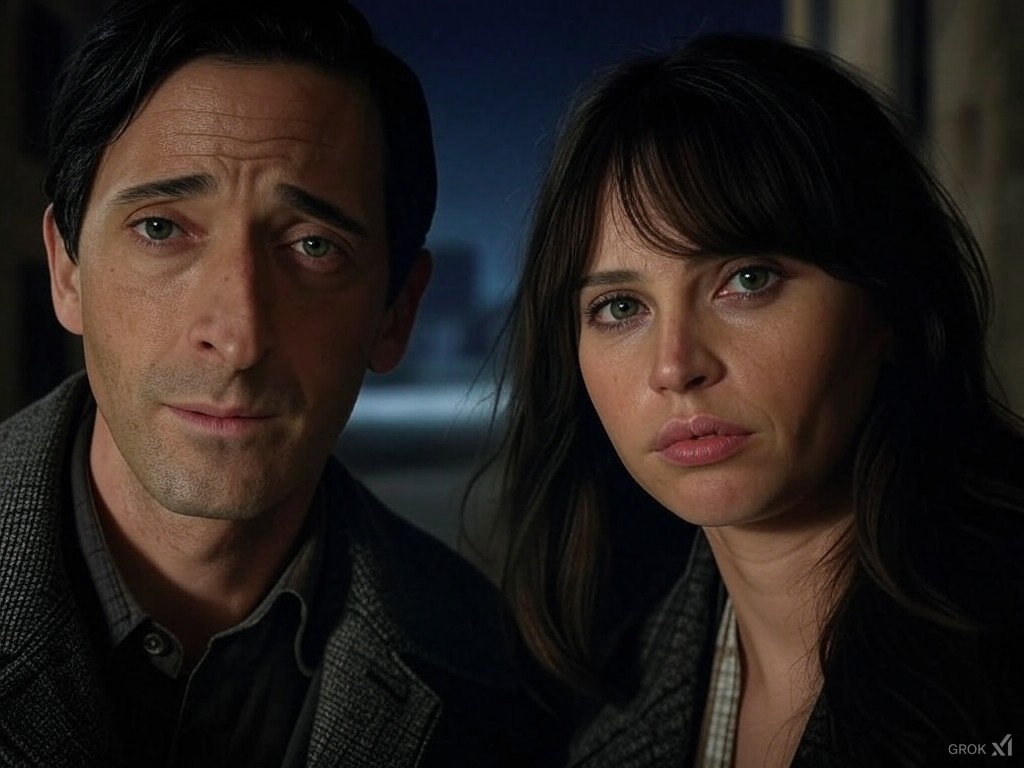Brady Corbet, director of the critically acclaimed historical drama "The Brutalist," has revealed that AI was utilized during post-production to refine the Hungarian accents of actors Adrien Brody and Felicity Jones.
However, Corbet maintains that this did not compromise the authenticity of their performances.
"Adrien and Felicity's performances are entirely their own. They spent months working with dialect coach Tanera Marshall to perfect their accents," stated American filmmaker and actor Brady Corbet to Deadline. "Innovative Respeecher technology was only used for editing Hungarian dialogue, specifically to refine certain vowels and letters for accuracy. No English language was altered."

Corbet also acknowledged using generative AI to assist in creating the architectural drawings featured at the end of the film, but he stressed that the final images were crafted by human hands. "All images were hand-drawn by artists," Corbet explained, noting that the drawings in question were intentionally crafted to mimic the low-quality digital renderings typical of their time.
"The Brutalist" is an ambitious 215-minute epic that follows László Tóth (played by Adrien Brody), a fictional Jewish Hungarian architect who emigrates to the United States after surviving the Holocaust and being separated from his family. Despite his previous acclaim in Europe, Tóth lives in obscurity until he is rediscovered by an American businessman, portrayed by Guy Pearce, who offers him a financially rewarding job.
The controversy over the film's use of AI began last week when an interview with editor Dávid Jancsó was published by Red Shark News. Jancsó revealed that the production team employed Respeecher software to polish Brody and Jones' dialogue after an unsuccessful attempt at ADR (Automated Dialogue Replacement).

Jancsó, a native Hungarian speaker, contributed his own voice to the tool to improve the Hungarian delivery. He argued that using Respeecher was merely an efficient way to achieve what could have been done manually. Both lead actors were reportedly supportive of this decision.
"It's mainly just replacing letters here and there," Jancsó explained to Red Shark. "You can do this in ProTools yourself, but with so much Hungarian dialogue, we needed to speed up the process; otherwise, we'd still be in post-production."
Jancsó also touched on the use of generative AI for creating architectural drawings but remained vague about the specifics. However, a 2022 article in Filmmaker Magazine by production designer Judy Becker clarifies that the film's architecture consultant used Midjourney to quickly generate mockups of three Brutalist buildings, which were then redrawn by a human illustrator.

These revelations come at an interesting time, as "The Brutalist" is considered a strong contender for multiple awards this season. Although the director, Brady Corbet, has confirmed these uses of AI, he somewhat downplays their impact.
The film has been celebrated for its efficiency, having been produced on a modest $10 million budget, and has been seen as a beacon for a sustainable model in the struggling low to mid-budget film sector. However, the news of AI involvement, even if minor, might make this model less attractive to some artists.
 The use of AI in filmmaking isn't new; a variety of films, from independent horror to major blockbusters like "Alien: Romulus," have openly admitted to incorporating AI in their production processes.
The use of AI in filmmaking isn't new; a variety of films, from independent horror to major blockbusters like "Alien: Romulus," have openly admitted to incorporating AI in their production processes.
Despite receiving considerable backlash, this hasn't necessarily hindered their commercial or critical success.
This suggests that while the integration of AI might stir controversy, it's becoming an increasingly accepted part of modern filmmaking.
More on AI: Artificial Intelligence






